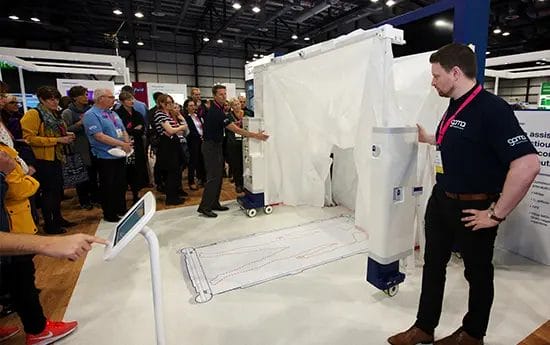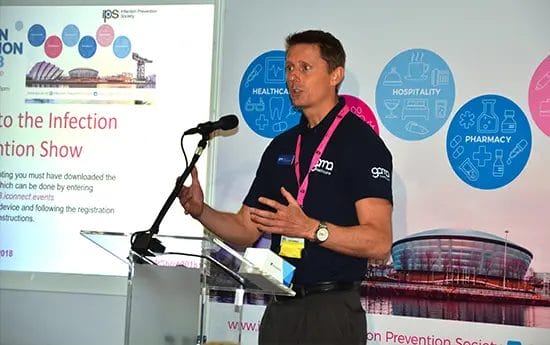Posted
23rd November 2018
Events and Exhibitions

It’s been a month or two since the 2018 Infection Prevention Society Conference in Glasgow, Scotland. So, we thought it would be a good time to look back and remind ourselves of some of the highlights from our point of view. You can access all of the IPS abstracts here.
– Andreas Voss gave a fabulous lecture on a water free ICU. Whilst this concept is very challenging, and feels pretty uncomfortable, the logic is clear. The risk of bacterial contamination from water, especially related to Pseudomonas, is commonplace and difficult to control. By using alcohol gels for hand hygiene most of the time, and hand wipes when hand washing with soap and water would usually be performed (e.g. when hands are visibly soiled), and sterile water for other patient care activities, tap water can be removed from the clinical environment. Evidence from a couple of studies shows that this intervention reduces the rate of antibiotic resistant Gram-negative bacteria in the critical care setting.
– Related to this, research by the University of West London (including our very own Clinical Director, Martin Kiernan) found that hand hygiene performed using antimicrobial hand wipes is just as effective as hand washing using soap and water (abstract #123).
– More work from the University of West London investigated the frequency of patient hand hygiene (abstract #130). In observational evaluations of patient opportunities for hand hygiene, patients had access to hand hygiene facilities in only 31% of 303 opportunities. Antimicrobial hand wipes would help to at least provide patients with the facilities to perform hand hygiene.
– Work from Cardiff University shows that biofilms are incredibly common in healthcare settings, with 95% of 60 items collected from three hospitals in the UK harbouring dry surface biofilm (abstract #96).
– Research from Guy’s and St. Thomas’ in London reports on the introduction of Clinell’s Violet UV-C room decontamination system into an acute admissions ward (abstract #77). In this setting, turnaround time is paramount and there usually isn’t time for hydrogen peroxide vapour room decontamination. UV-C was deployed a staggering 3980 times over the course of a year (more than 10 times per day), with turnaround time for UV-C at 1 hour (including room cleaning we presume) compared with 3 hours for hydrogen peroxide vapour. This reinforces that UV-C has an important role to play in automated room decontamination, mainly when C. difficile spores are not the target organism.
– And finally… we launched Rediroom! This is designed to provide instant patient isolation in hospitals. We were delighted that Rediroom won the vote as the best product in the ‘Pitch in 5’ section of the inaugural IPS Show!

Thanks to the conference organisers for another stellar conference!
SHARE THIS ARTICLE
Tags
Latest News
Embracing sustainability and cost savings: The journey of Clinell Indicator Notes to paper-based solutions
At GAMA Healthcare, we’ve always prided ourselves on being at…
Introducing HEXI HUB: A seamless transition in our product line
We’re pleased to announce an update to our product offering…
Innovative solutions for tackling Carbapenemase-producing Enterobacteriaceae (CPE) at King’s College Hospitals
King’s College Hospital NHS Foundation Trust, one of London’s largest…
Gloves Off: reducing unnecessary plastic waste during environmental cleaning and disinfection
In this blog, Dr Phil Norville discusses the momentum-gaining ‘Gloves…




